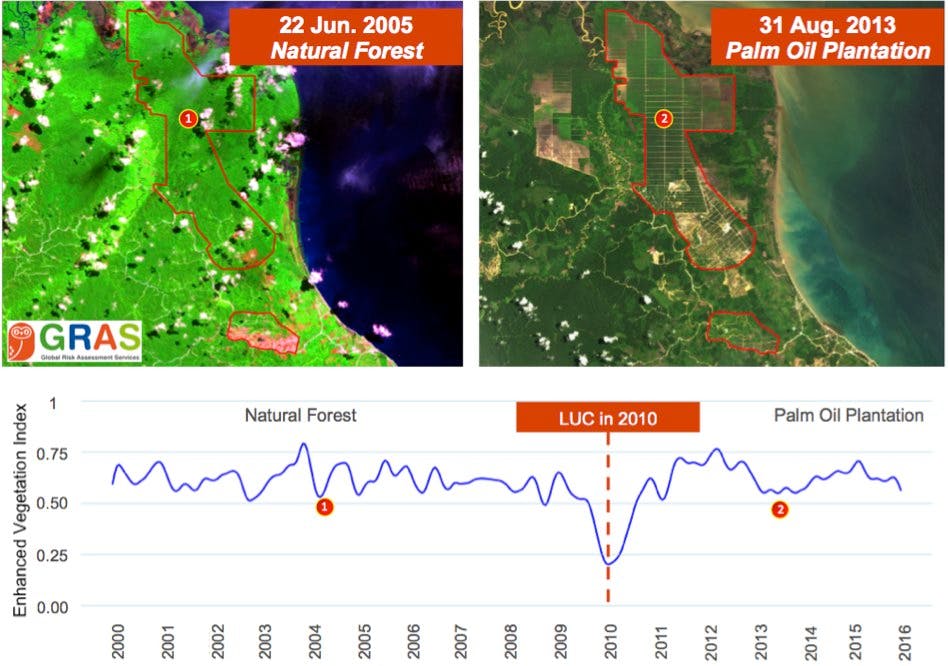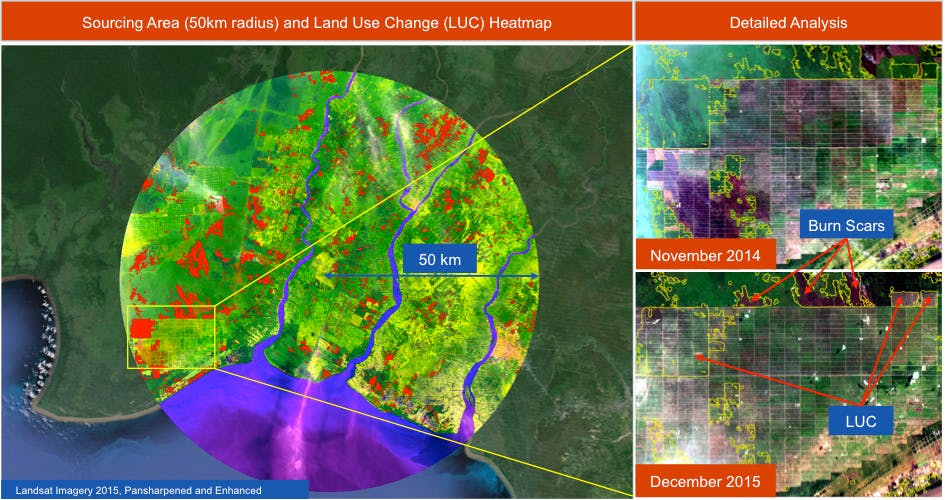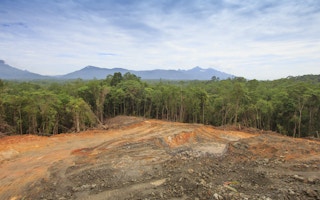The need to protect forests for the preservation of high conservation value and the mitigation of climate change is indisputable. Stakeholders pressure companies along the value chains from plantation and processing level all the way to consumer goods companies, retailers and brand owners to stop deforestation.
To continue reading, subscribe to Eco‑Business.
There's something for everyone. We offer a range of subscription plans.
- Access our stories and receive our Insights Weekly newsletter with the free EB Member plan.
- Unlock unlimited access to our content and archive with EB Circle.
- Publish your content with EB Premium.
They demand a verifiable implementation of deforestation-free supply chains. NGOs and also more and more companies in the food sector do not accept so-called “book and claim” approaches any longer, they are considered as a green washing exercise.
As a result, many companies have published their sustainability and no-deforestation policies and commitments. However the latest report by Greenpeace shows that when it comes to deforestation-free palm oil, most of the multinationals are still failing to deliver on their promises.
This has been accompanied by moves by investment and wealth funds to drop certain companies over links to deforestation and demand increasing commitments to sustainability and ending deforestation.
Reasons for not reaching the no-deforestation targets are manifold. Among other things, they include the complexity of supply chains, lack of incentives, limited access to reliable information on Land Use Change (LUC) and deforestation as well as the limitation of existing monitoring and reporting approaches.
Verifying and monitoring sustainable agriculture and forestry is not easy. Mostly because it’s difficult to access comprehensive, reliable and geo-referenced data on factors like biodiversity, carbon stock and social issues. In particular LUC, e.g. conversion of forests, peatland or grassland to agricultural crop/ plantation land is hard to monitor. Therefore it is difficult to guarantee deforestation-free supply chains, to conduct risk assessments and to picture LUC over time.
However, we at Global Risk Assessment Services (GRAS) – a web-platform and consultancy firm - believe that companies can currently achieve more. Implementation, monitoring and reporting tools to credibly reach the target of deforestation-free supply chains are available.
One such solution is the GRAS tool, an innovative and easy-to-use online tool that can detect LUC – through an automated system of satellite monitoring, developed in collaboration with experts from the German Aerospace Center (DLR).
GRAS provides comprehensive sustainability-related information on biodiversity, carbon stocks, LUC and social indices that you can see by clicking on different overlapping visual layers. Information has been compiled in cooperation with the University of Illinois at Chicago, The Nature Conservancy, The Welthungerhilfe and the Kiel Institute for the World Economy.
GRAS offers analysis of up-to-date satellite imagery, without the need for remote sensing expertise, so that users can identify areas of forest or grassland that have been converted into agricultural cropland and plantations. GRAS can increase the confidence of companies and investors that biomass is being produced in a sustainable manner, while allowing companies and NGOs to detect production practices where unsustainable LUC took place.
The GRAS web-tool goes beyond the simple display of LUC maps. Companies can verify the occurrence of LUC within sourcing areas or on individual farms and plantations. They can use an easy to interpret, yet powerful, green cover index called the Enhanced Vegetation Index (EVI). With EVI data on the vegetation cover dating back to 2000, one can differentiate among different types of green cover, monitor land use over time, and most importantly detect land use change.
EVI data can detect deforestation, replanting activities, grassland conversion and cropping activities. Agricultural companies, traders and certification systems already use GRAS to verify deforestation-free palm oil plantations and soybean oil production and supply chains.
The following examples demonstrate how GRAS can be used to identify LUC over time. The first figure shows where natural forest was removed and replaced with a palm plantation. Therefore, proving this plantation is not deforestation-free prior to 2011.

Forest converted to a palm oil plantation. Image: GRAS
The second figure shows how GRAS can identify the risk that land has been deforested and actually map LUC in entire sourcing areas and also analyze in detail what type of LUC occurred (e.g. forest to plantation or just replanting of plantation or burning). Such analysis allows companies to verify the sustainability of plantations where they source agricultural or forestry commodities from, and enables them to monitor and analyse high risk plots in detail.

Heat-map showing LUC in a sourcing region. Image: GRAS
These examples show how GRAS can serve as a much-needed solution to help ensure sustainable and deforestation-free production and supply chains. Compared to existing tools, GRAS includes current and detailed data on LUC and allows a customized analysis of LUC and sustainability issues, including also biodiversity, social and carbon information on the ground.
GRAS also offers sustainability dashboards and scorecards that can display such information for individual companies. Further information layers can be added as required. With the GRAS tool the implementation of deforestation-free supply chains is facilitated and a fact-based, objective and credible sustainability reporting becomes reality.
The GRAS development has been supported by the German Federal Ministry of Food and Agriculturethrough its Agency for Renewable Resources (FNR).
Jan Henke and Norbert Schmitz are managing directors, Global Risk Assessment Services GmbH. This post was written exclusively for Eco-Business.











